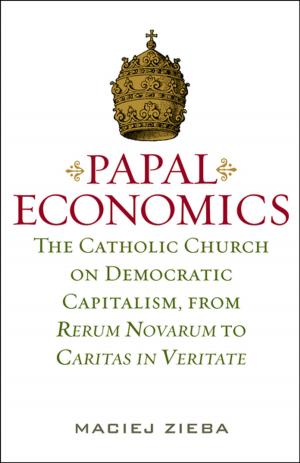J. R. R. Tolkien's Sanctifying Myth
Understanding Middle-earth
Fiction & Literature, Literary Theory & Criticism| Author: | Bradley J. Birzer | ISBN: | 9781497648913 |
| Publisher: | Intercollegiate Studies Institute (ORD) | Publication: | May 13, 2014 |
| Imprint: | Intercollegiate Studies Institute | Language: | English |
| Author: | Bradley J. Birzer |
| ISBN: | 9781497648913 |
| Publisher: | Intercollegiate Studies Institute (ORD) |
| Publication: | May 13, 2014 |
| Imprint: | Intercollegiate Studies Institute |
| Language: | English |
Since the appearance of The Lord of the Rings in 1954, J. R. R. Tolkien’s works have always sold briskly, appealing to a wide and diverse audience of intellectuals, religious believers, fantasy enthusiasts, and science fiction aficionados. Now, Peter Jackson’s film version of Tolkien’s trilogy—with its accompanying Rings-related paraphernalia and publicity—is playing a unique role in the dissemination of Tolkien’s imaginative creation to the masses. Yet, for most readers and viewers, the underlying meaning of Middle-earth has remained obscure.
Bradley Birzer has remedied that with this fresh study. In J. R. R. Tolkien’s Sanctifying Myth: Understanding Middle-earth, Birzer explains the surprisingly specific religious symbolism that permeates Tolkien’s Middle-earth legendarium. He also explores the social and political views that motivated the Oxford don, ultimately situating Tolkien within the Christian humanist tradition represented by Thomas More and T. S. Eliot, Dante and C. S. Lewis. Birzer argues that through the genre of myth Tolkien created a world that is essentially truer than the one we think we see around us every day, a world that transcends the colorless disenchantment of our postmodern age.
“A small knowledge of history,” Tolkien once wrote, “depresses one with the sense of the everlasting weight of human iniquity.” As Birzer demonstrates, Tolkien’s recognition of evil became mythologically manifest in the guise of Ringwraiths, Orcs, Sauron, and other dark beings. But Tolkien was ultimately optimistic: even weak, bumbling hobbits and humans, as long as they cling to the Good, can finally prevail. Bradley Birzer has performed a great service in elucidating Tolkien’s powerful moral vision.
Since the appearance of The Lord of the Rings in 1954, J. R. R. Tolkien’s works have always sold briskly, appealing to a wide and diverse audience of intellectuals, religious believers, fantasy enthusiasts, and science fiction aficionados. Now, Peter Jackson’s film version of Tolkien’s trilogy—with its accompanying Rings-related paraphernalia and publicity—is playing a unique role in the dissemination of Tolkien’s imaginative creation to the masses. Yet, for most readers and viewers, the underlying meaning of Middle-earth has remained obscure.
Bradley Birzer has remedied that with this fresh study. In J. R. R. Tolkien’s Sanctifying Myth: Understanding Middle-earth, Birzer explains the surprisingly specific religious symbolism that permeates Tolkien’s Middle-earth legendarium. He also explores the social and political views that motivated the Oxford don, ultimately situating Tolkien within the Christian humanist tradition represented by Thomas More and T. S. Eliot, Dante and C. S. Lewis. Birzer argues that through the genre of myth Tolkien created a world that is essentially truer than the one we think we see around us every day, a world that transcends the colorless disenchantment of our postmodern age.
“A small knowledge of history,” Tolkien once wrote, “depresses one with the sense of the everlasting weight of human iniquity.” As Birzer demonstrates, Tolkien’s recognition of evil became mythologically manifest in the guise of Ringwraiths, Orcs, Sauron, and other dark beings. But Tolkien was ultimately optimistic: even weak, bumbling hobbits and humans, as long as they cling to the Good, can finally prevail. Bradley Birzer has performed a great service in elucidating Tolkien’s powerful moral vision.















